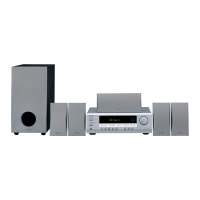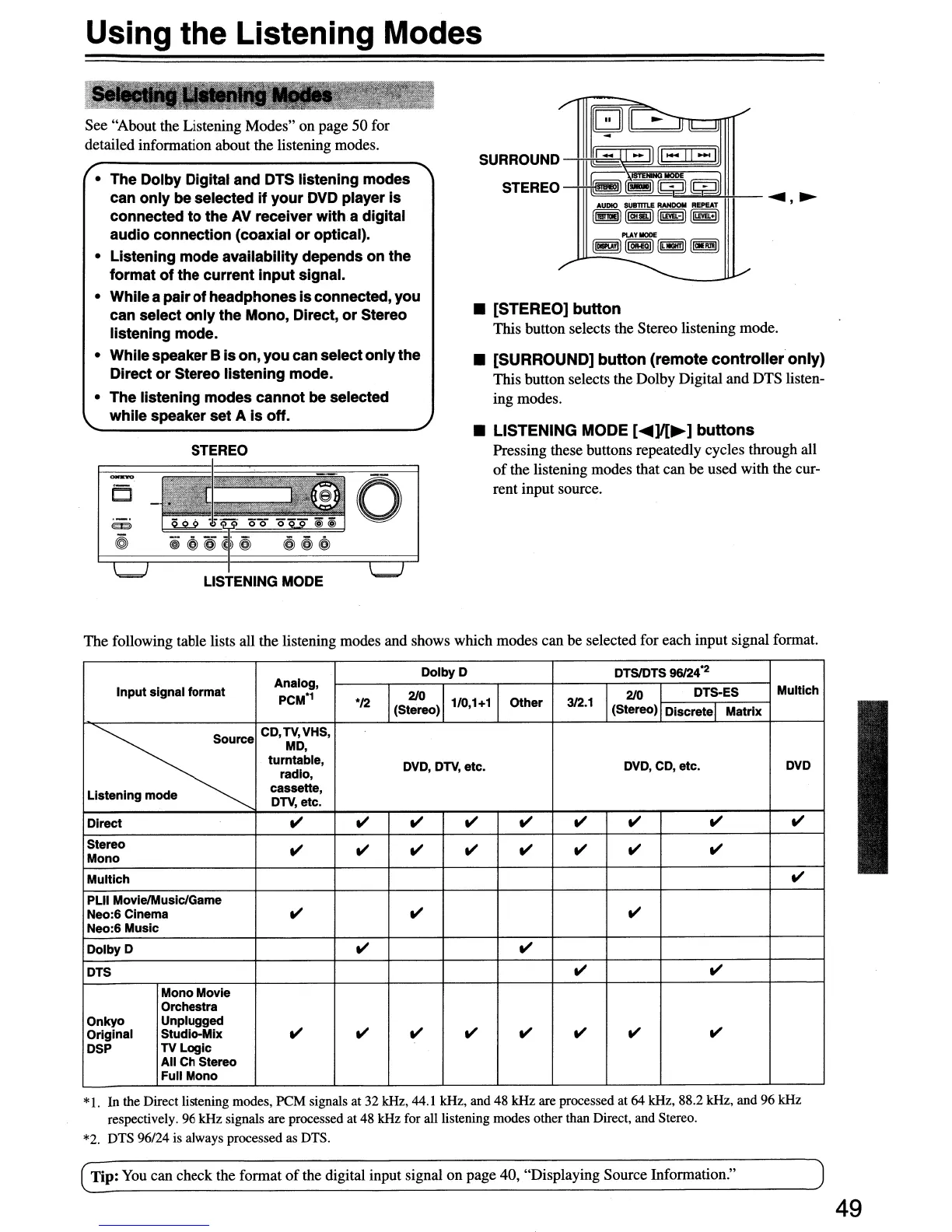Using the Listening Modes
See "About the Listening Modes" on page
50
for
detailed information about the listening modes.
• The Dolby Digital and
DTS
listening modes
can only
be
selected
if
your
DVD
player Is
connected
to
the
AV
receiver with a digital
audio connection (coaxial
or
optical).
• Listening mode availability depends on the
format
of
the current Input signal.
• While apair
of
headphones isconnected, you
can select
only
the Mono, Direct,
or
Stereo
listening mode.
• While speaker B ison, you can selectonlythe
Direct
or
Stereo listening mode.
• The listening modes cannot be selected
while speaker set A is off.
STEREO
o
LISTENING MODE
""A=UDlO==<"':SU:=I1TTlE===:-"RAHIlOIl=Iiii;;;:"':;;;R£P£A;;t;;;i;;~;;LJHf--
~
,
~
I~)[~)(l~)[~l
• [STEREO]
button
This button selects the Stereo listening mode.
• [SURROUND]
button
(remote
controller
only)
This button selects the Dolby Digital and DTS listen-
ing modes.
• LISTENING MODE [
....
]I[~]
buttons
Pressing these buttons repeatedly cycles through all
of
the listening modes that can
be
used with the cur-
rent input source.
The following table lists all the listening modes and shows which modes can be selected for each input signal format.
DolbyD
DTSIDTS
96124'2
Input signal format
Analog,
DTS-eS
Multlch
pCM'1
210
2JO
*/2
(Stereo)
110,1+1
Other 3/2.1
(Stereo) DiscreteI Matrix
~
CD,TY,VHS,
MD.
turntable,
DVD,
DTY,
etc.
DVD.
CD.
etc.
DVD
radio,
Listening mode
cassette,
DTY,
etc.
Direct
t/ t/
t/ t/
t/ t/ t/
t/ t/
Stereo
t/
t/ t/ t/ t/ t/ t/
t/
Mono
Multich
t/
PLII MovlelMuslclGame
Neo:6 Cinema
t/
t/ t/
Neo:6 Music
DolbyD
t/
t/
DTS
t/
t/
Mono Movie
Orchestra
Onkyo
Unplugged
Original
Studio-Mix
t/
t/
t/
t/ t/ t/
t/
t/
DSP
TYLogic
All
Ch
Stereo
Full Mono
*
1.
In the Direct listening modes, PCM signals at 32 kHz, 44.1 kHz, and 48 kHz are processed at 64 kHz. 88.2 kHz, and 96 kHz
respectively. 96 kHz signals are processed at 48 kHz for all listening modes other than Direct, and Stereo.
*2. DTS 96/24 is always processed as DTS.
Tip:
You can check the format
of
the digital input signal on page 40, "Displaying Source Information."
49

